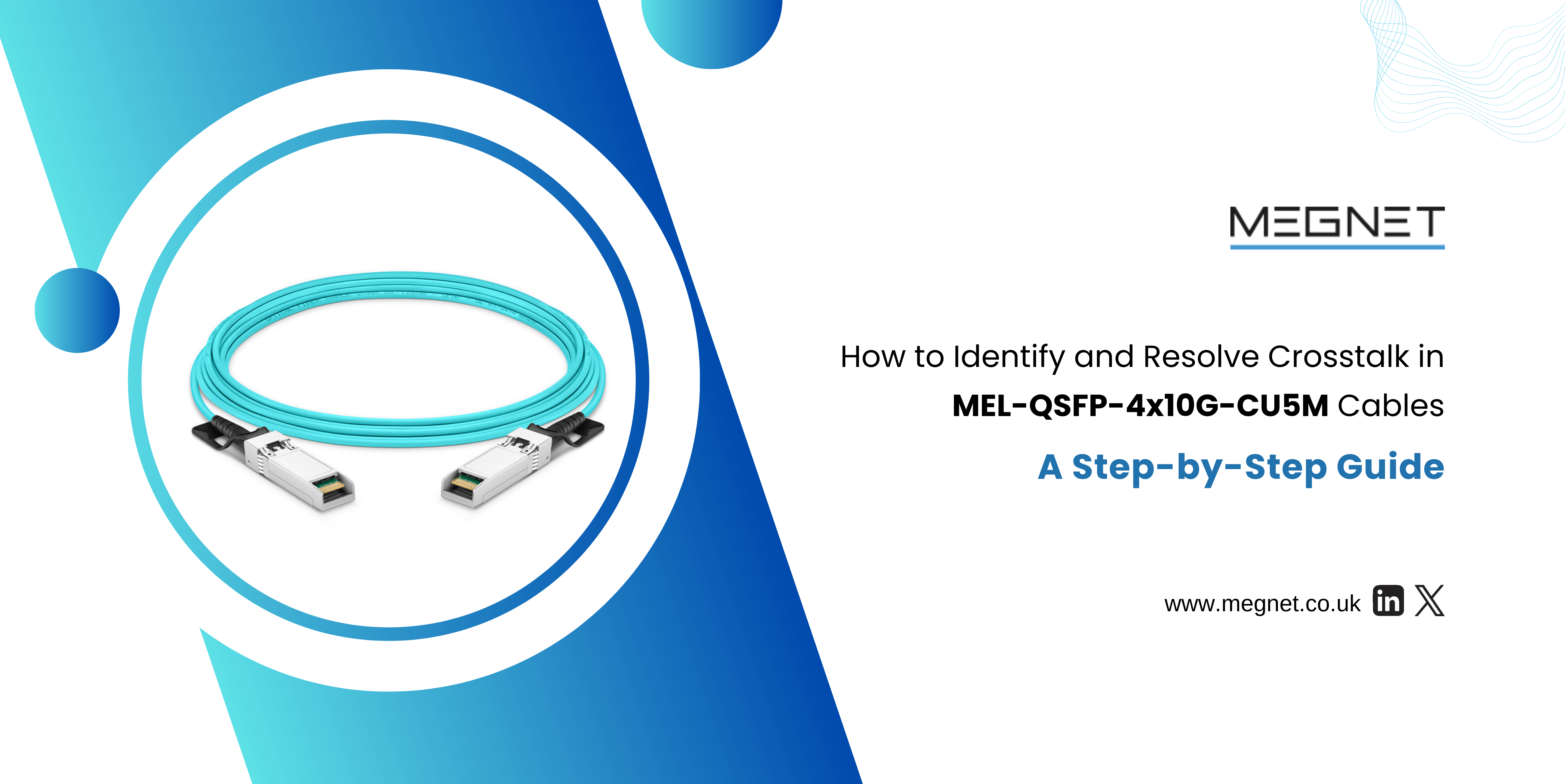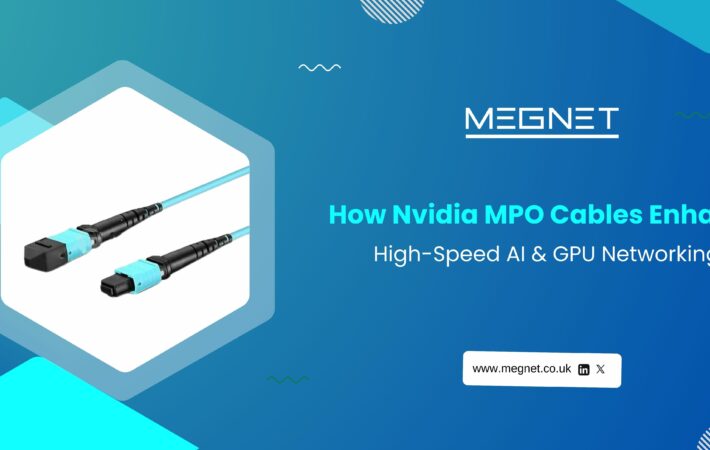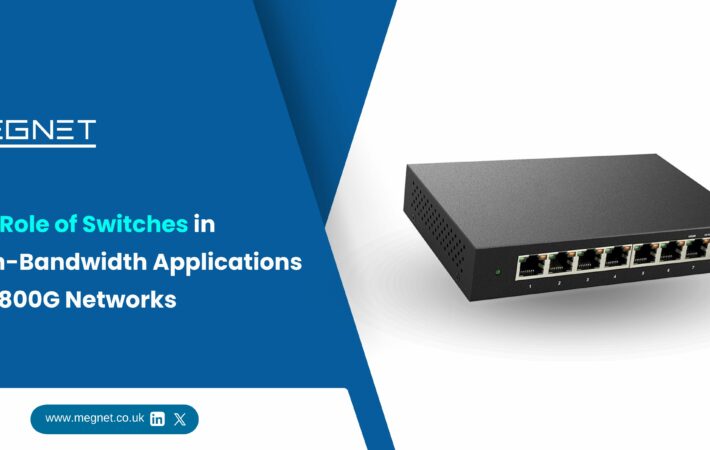
Resolve Crosstalk in MEL-QSFP-4x10G-CU5M Cables for Optimal Network Performance
In high-speed networking, crosstalk can significantly impact performance, leading to data corruption and signal degradation. MEL-QSFP-4x10G-CU5M cables, commonly used in data centres and telecommunications, are not immune to this issue. Understanding how to identify and resolve crosstalk in these cables is crucial for maintaining optimal network performance. This guide provides a comprehensive, step-by-step approach to diagnosing and mitigating crosstalk in MEL-QSFP-4x10G-CU5M cables.
What is Crosstalk?
Crosstalk refers to the interference caused by signals in adjacent cables or within different pairs in the same cable. This electromagnetic interference (EMI) can lead to data loss, increased error rates, and degraded network performance. There are two main types of crosstalk:
- Near-End Crosstalk (NEXT): This occurs when a signal transmitted on one pair of wires creates interference on another pair at the same end of the cable.
- Far-End Crosstalk (FEXT): This occurs when a signal transmitted on one pair of wires creates interference on another pair at the far end of the cable.
Identifying Crosstalk in MEL-QSFP-4x10G-CU5M Cables
Identifying crosstalk involves a series of diagnostic steps using specialized equipment and software. Below are detailed steps to identify crosstalk:
Step 1: Visual Inspection
Begin with a visual inspection of the cable and connectors:
- Check for Physical Damage: Look for any visible signs of wear, cuts, or kinks in the cable.
- Verify Connector Integrity: Ensure that connectors are properly attached and free of damage.
Step 2: Use a Network Cable Tester
A network cable tester can help detect crosstalk by measuring signal loss and interference:
- Set Up the Tester: Connect the MEL-QSFP-4x10G-CU5M cable to the network cable tester.
- Run Diagnostic Tests: Perform tests such as NEXT and FEXT measurements to detect crosstalk levels.
- Analyse Results: Compare the test results with industry standards to identify any anomalies.
Step 3: Spectrum Analysis
Spectrum analysis can provide a more detailed view of crosstalk:
- Connect a Spectrum Analyzer: Use a spectrum analyser to monitor the cable’s frequency spectrum.
- Identify Interference Patterns: Look for spikes or irregular patterns that indicate crosstalk.
- Record Findings: Document the frequencies and amplitudes of any detected crosstalk.
Resolving Crosstalk in MEL-QSFP-4x10G-CU5M Cables
Once crosstalk is identified, several techniques can be employed to mitigate it:
Step 1: Improve Cable Management
Proper cable management can significantly reduce crosstalk:
- Separate Signal Cables: Ensure that high-speed data cables are separated from power cables and other sources of EMI.
- Use Cable Ties Sparingly: Avoid over-tightening cable ties, which can distort the cable geometry and increase crosstalk.
- Maintain Proper Bend Radius: Follow manufacturer guidelines for the minimum bend radius to prevent signal degradation.
Step 2: Upgrade to Shielded Cables
Shielded cables offer better protection against crosstalk:
- Choose Shielded Variants: Consider upgrading to shielded MEL-QSFP-4x10G-CU5M cables, which have additional shielding to reduce EMI.
- Ensure Proper Grounding: Finely ground the shielding to maximize its effectiveness.
Step 3: Use Crosstalk Suppression Techniques
Several techniques can suppress crosstalk:
- Twisted Pair Design: Ensure that the cable design uses twisted pairs, which can cancel out electromagnetic interference.
- Ferrite Beads: Attach ferrite beads to the cable to suppress high-frequency noise.
- Isolation Transformers: Use isolation transformers to separate signal paths and reduce crosstalk.
Advanced Troubleshooting Techniques
For persistent crosstalk issues, advanced troubleshooting techniques may be necessary:
Step 1: Time-Domain Reflectometry (TDR)
TDR can pinpoint the location of crosstalk:
- Set Up the TDR: Connect the MEL-QSFP-4x10G-CU5M cable to a TDR device.
- Analyse Reflections: Send a signal through the cable and analyse the reflections to identify points of interference.
- Locate Faults: Determine the exact location of crosstalk based on the time delay of the reflections.
Step 2: Network Analysers
Network analysers provide comprehensive analysis capabilities:
- Perform S-Parameter Measurements: Use a network analyser to measure scattering parameters (S-parameters) and assess the cable’s performance.
- Identify Anomalies: Look for deviations in the S-parameters that indicate crosstalk.
- Implement Corrective Measures: Based on the analysis, implement specific corrective measures to mitigate crosstalk.
Preventive Measures
Preventing crosstalk is often easier than resolving it. Implementing the following preventive measures can help maintain optimal cable performance:
Step 1: Follow Installation Best Practices
Adhering to best practices during installation can prevent crosstalk:
- Use Quality Components: Ensure that all components, including connectors and cables, meet industry standards.
- Follow Manufacturer Guidelines: Adhere to the manufacturer’s installation guidelines to avoid issues.
- Regular Maintenance: Perform regular inspections and maintenance to detect and address potential issues early.
Step 2: Environmental Control
Controlling the environment can reduce crosstalk risks:
- Temperature and Humidity Control: Maintain a stable environment with controlled temperature and humidity levels.
- Minimize EMI Sources: Keep EMI sources, such as motors and fluorescent lights, away from network cables.
Case Study: Resolving Crosstalk in a Data Centre
To illustrate the process, let’s consider a case study of a data centre experiencing crosstalk issues with MEL-QSFP-4x10G-CU5M cables:
Problem Description
A data centre reported intermittent network performance issues, which were traced back to crosstalk in MEL-QSFP-4x10G-CU5M cables.
Diagnostic Process
- Visual Inspection: Initial inspection revealed no physical damage.
- Network Cable Tester: NEXT and FEXT tests indicated high crosstalk levels.
- Spectrum Analysis: Identified specific frequencies where crosstalk was occurring.
Resolution Steps
- Cable Management: Reorganized cables to reduce interference.
- Shielded Cables: Upgraded to shielded versions of the MEL-QSFP-4x10G-CU5M cables.
- Advanced Techniques: Used TDR and network analysers to fine-tune the setup and eliminate remaining crosstalk.
Outcome
After implementing these steps, the data centre reported a significant improvement in network performance, with crosstalk levels reduced to within acceptable limits.
Deep Dive into Crosstalk Mitigation Techniques
Understanding and implementing advanced crosstalk mitigation techniques can further enhance the performance and reliability of your MEL-QSFP-4x10G-CU5M cables. This section explores these techniques in greater detail.
Advanced Cable Management
- Proper cable management goes beyond basic organization. Here are some advanced strategies:
- Cable Separation: Increase the physical distance between parallel-running high-frequency data cables to reduce the potential for electromagnetic interference.
- Crossing Cables at Right Angles: When data and power cables must intersect, ensure they cross at right angles to minimize interference.
- Using Conduits and Trays: Deploy conduits and cable trays to keep cables organized and separated. This reduces the likelihood of crosstalk by maintaining consistent spacing and shielding.
Enhanced Shielding Techniques
Shielding is a critical component in preventing crosstalk. Enhanced techniques include:
- Double Shielding: Utilize cables with both an outer foil shield and an inner braided shield to provide superior EMI protection.
- Metallic Conduits: Place cables within metallic conduits that act as an additional barrier against external electromagnetic fields.
- Grounding Shields: Ensure that all shielding is properly grounded. Inadequate grounding can render shielding ineffective and even act as an antenna, exacerbating crosstalk issues.
Active Crosstalk Cancellation
- Active cancellation techniques involve more complex and sophisticated technology:
- Active Noise Cancellation (ANC): Similar to ANC in headphones, some advanced network systems use ANC to detect and cancel out crosstalk signals in real-time.
- Signal Processing Algorithms: Implement digital signal processing algorithms within network hardware to filter out crosstalk. These algorithms can adapt to changing interference patterns, providing dynamic crosstalk mitigation.
Implementing Quality Assurance Processes
Implementing rigorous quality assurance (QA) processes can prevent crosstalk from becoming a significant issue. Here are some QA strategies:
- Pre-Installation Testing – Before installation, thoroughly test all cables and connectors:
- Factory Testing – Ensure that cables meet industry standards through factory testing, including NEXT and FEXT measurements.
- On-Site Testing – Perform on-site testing of cables and connectors before installation to verify their integrity and performance.
- Post-Installation Validation – After installation, validate the setup to ensure it meets performance criteria:
- End-to-End Testing – Conduct end-to-end testing of the network to measure overall performance, including latency, packet loss, and crosstalk levels.
- Periodic Maintenance Checks – Schedule regular maintenance checks to monitor for signs of wear or degradation that could lead to crosstalk.
Training and Education
Educating network administrators and technicians about crosstalk and its mitigation is crucial. This can be achieved through:
- Workshops and Seminars: Conduct workshops and seminars focusing on crosstalk identification and mitigation techniques.
- Certification Programs: Encourage staff to obtain certifications from reputable organizations such as the Telecommunications Industry Association (TIA) or the Institute of Electrical and Electronics Engineers (IEEE).
- Continuous Learning: Promote a culture of continuous learning by providing access to the latest research, whitepapers, and case studies on crosstalk management.
Future Trends in Crosstalk Management
As networking technology evolves, so do the methods for managing crosstalk. Here are some future trends to watch:
- Artificial intelligence (AI) and machine learning (ML) are beginning to play a role in network management:
- Predictive Analysis: AI and ML can predict potential crosstalk issues before they occur by analysing patterns in network traffic and environmental conditions.
- Automated Mitigation: These technologies can automatically adjust network configurations to mitigate crosstalk in real-time, ensuring optimal performance without manual intervention.
Advanced Materials
The development of new materials for cables can also reduce crosstalk:
- Nano – Materials: Research into nano – materials that offer superior shielding properties could lead to the next generation of high-performance cables.
- Composite Materials: Composite materials that combine the best properties of different substances can provide enhanced performance and reduced susceptibility to crosstalk.
Crosstalk in MEL-QSFP-4x10G-CU5M cables can severely impact network performance, but with the right diagnostic tools and mitigation techniques, it can be effectively identified and resolved. By following the steps outlined in this guide, network administrators can ensure their systems operate efficiently and reliably, minimizing downtime and maximizing data integrity.

FAQ's
Crosstalk is primarily caused by electromagnetic interference between adjacent cables or pairs within the same cable. Factors contributing to crosstalk include poor cable management, inadequate shielding, and the close proximity of high-speed data cables to power cables or other EMI sources.
NEXT (Near-End Crosstalk) occurs when the interference is detected at the same end of the cable where the signal is transmitted. In contrast, FEXT (Far-End Crosstalk) is detected at the opposite end of the cable. Using a network cable tester, you can measure both NEXT and FEXT to determine the type and location of crosstalk.
Industry standards, such as those set by the Telecommunications Industry Association (TIA) and the Institute of Electrical and Electronics Engineers (IEEE), provide guidelines for acceptable crosstalk levels. For MEL-QSFP-4x10G-CU5M cables, it’s essential to refer to the specific standards relevant to QSFP and high-speed data cables, such as the IEEE 802.3 and TIA-568 standards.
Yes, there are several techniques to resolve crosstalk without replacing the cables. These include improving cable management, enhancing shielding, and using crosstalk suppression techniques like ferrite beads and isolation transformers. However, if the cables are damaged or inherently prone to crosstalk, replacing them with higher-quality, shielded cables may be necessary.
Regular maintenance checks are crucial for preventing crosstalk issues. It’s recommended to perform these checks at least annually, but more frequent inspections (e.g., quarterly or biannually) may be necessary in environments with high levels of EMI or where network performance is critical.
Essential tools for diagnosing crosstalk include: • Network Cable Testers: For measuring NEXT and FEXT. • Spectrum Analysers: To identify interference patterns across the frequency spectrum. • Time-Domain Reflectometers (TDRs): For pinpointing the exact location of crosstalk issues. • Network Analysers: For comprehensive analysis and measurement of S-parameters.
Proper cable selection can significantly mitigate the risk of crosstalk: • Choose High-Quality Cables: opt for cables that meet or exceed industry standards for shielding and performance. • Select Shielded Variants: Shielded cables offer better protection against EMI and crosstalk. • Verify Certification: Ensure the cables are certified by reputable organizations like TIA or IEEE.
Cable length can influence crosstalk levels: • Longer Cables: Longer cables are more susceptible to signal degradation and crosstalk due to increased distance for interference to accumulate. • Optimal Length: Use the shortest possible length for your application while maintaining performance and adherence to standards. • Testing for Length-Specific Issues: Test cables at their intended lengths to ensure they meet performance criteria without excessive crosstalk.
Yes, network configuration can impact crosstalk: • Port Grouping: Avoid grouping ports with high-speed data transfer next to each other on network devices to reduce interference. • Channel Allocation: Allocate channels to minimize overlap and reduce the potential for crosstalk. • Load Balancing: Proper load balancing can distribute network traffic more evenly, reducing the strain on any single cable and mitigating crosstalk.
Environmental factors can exacerbate crosstalk issues: • Electromagnetic Interference (EMI): Nearby electronic devices and heavy machinery can generate EMI, increasing the risk of crosstalk. • Temperature and Humidity: Extreme temperature and humidity levels can degrade cable insulation, making them more susceptible to crosstalk. • Physical Proximity: Cables running in close proximity to each other, especially those carrying high-frequency signals, are more prone to crosstalk.
Common symptoms indicating crosstalk issues include: • Increased Error Rates: Higher rates of data packet errors and retransmissions. • Reduced Data Throughput: Slower data transfer speeds and overall reduced network performance. • Intermittent Connectivity Issues: Random disconnects or connectivity problems that are hard to trace. • Poor Signal Quality: Degraded signal quality, often noticeable in applications requiring high bandwidth, such as video conferencing and streaming.
Testing the effectiveness of shielding methods involves: • Shield Integrity Tests: Verify that the shielding is continuous and properly grounded. • Conductivity Tests: Ensure the shielding material has low resistance and high conductivity to effectively block EMI. • Field Strength Measurements: Use a field strength meter to measure the intensity of electromagnetic fields around the shielded cable.







Leave a comment
Your email address will not be published. Required fields are marked *